
Skyscrapers, Two String Kites, and Turbot Fish (oh my!)
These are three similar sudoku solving strategies that share the same logic. They are considered to be advanced solving strategies and normally won’t be necessary until all of the basic solving techniques have been exhausted. They are all alternating inference chains (AIC*) with three links and involve a single candidate. The difference in the three strategies lies in the orientation of the links.
Figure 1 Skyscraper
Figure 1 illustrates an AIC with three links. The chain begins with the 4 in R2C2. It is strongly linked to the 4 in R9C2. The 4’s in row 9 are weakly linked. The last link in the chain is the strongly linked 4’s between R9C4 and R1C4. Here the strong links are shown as red lines, weak links are shown as green lines.
Remember that strong link means that a candidate appears exactly twice in a house (row, column, or box). This is also known as a conjugate pair. If one is false, the other must be true. In a weak link, a candidate appears three or more times in a house. If one is true, the other must be false.
As a result, at least one end of the chain must be true (possibly both are true). It is not possible that both are false. Therefore, any cells that are exposed to both ends of the chain cannot contain the involved candidate.
In figure 1, this is called a Skyscraper. It resembles two tall buildings of unequal height (columns 2 and 4). In a Skyscraper, the two strongly linked pairs (shown as red lines) are parallel.
Figure 2 Two String Kite
Figure 2 shows a chain of 4’s with three links. In this case, the strongly linked pairs are perpendicular (row 1 and column 2). This arrangement is called a Two String Kite. The target cell is R9C4. The second link in the chain (green) will always reside in a box instead of a row or column and can be either strongly or weakly linked. In this example, the 4’s in box 1 happen to be strongly linked (ie. there are only two 4’s in box 1).
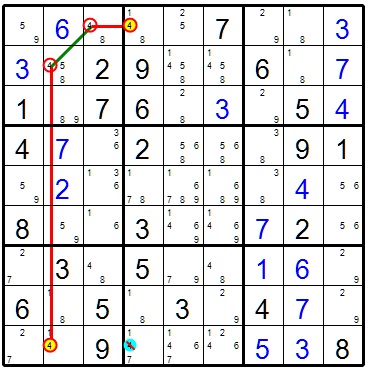 |
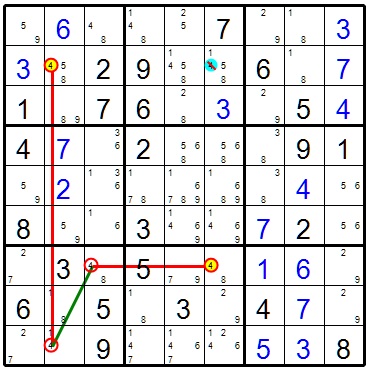 |
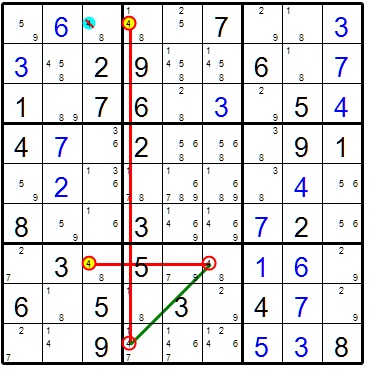 |
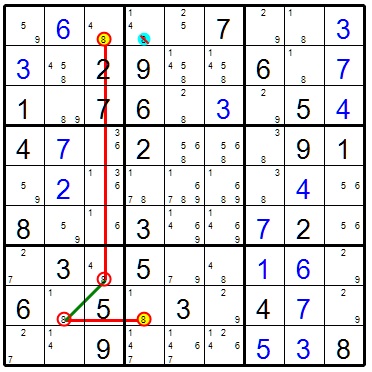 |
Figure 3 Two String Kites
Figure 3 shows more examples of Two String Kites. In each case, the strongly linked pairs are perpendicular to each other while the second link in the chain occurs in a box.
The other possible orientation is where the first and second links in the chain are perpendicular and the third link resides in a box. See figure 4. This iis called a Turbot Fish.
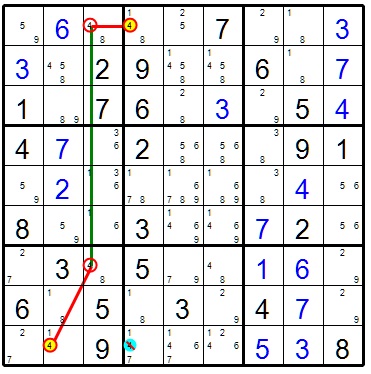 |
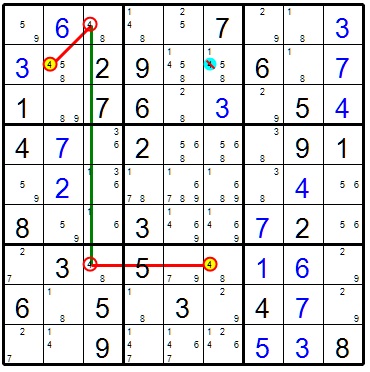 |
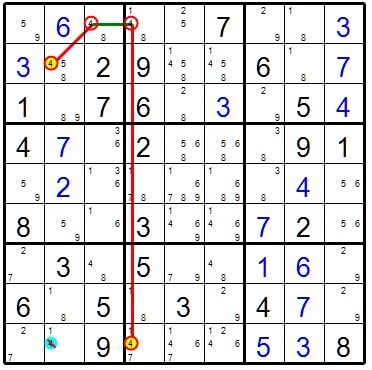 |
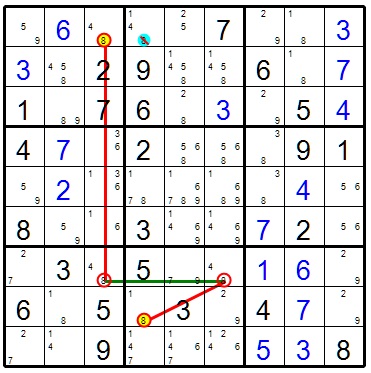 |
Just like the Skyscraper and the Two String Kite, this is a three link AIC. One of the strong links (red) resides in a box. Again, the green link can be weak or strong. This orientation is known as a Turbot Fish.
When you examine the puzzle in the above figures, you will notice that the basic solving strategies have been exhausted. You must employ one or more advanced techniques in order to proceed. In this case, there are four Skyscrapers, four Two String Kites, and five Turbot Fish. Many are redundant meaning they will cause the same eliminations. The point is that searching for these is often time well spent. Don't overlook these gems.
I invite questions, comments, criticisms, etc.
. Drop me an email at:
Happy puzzling!
John